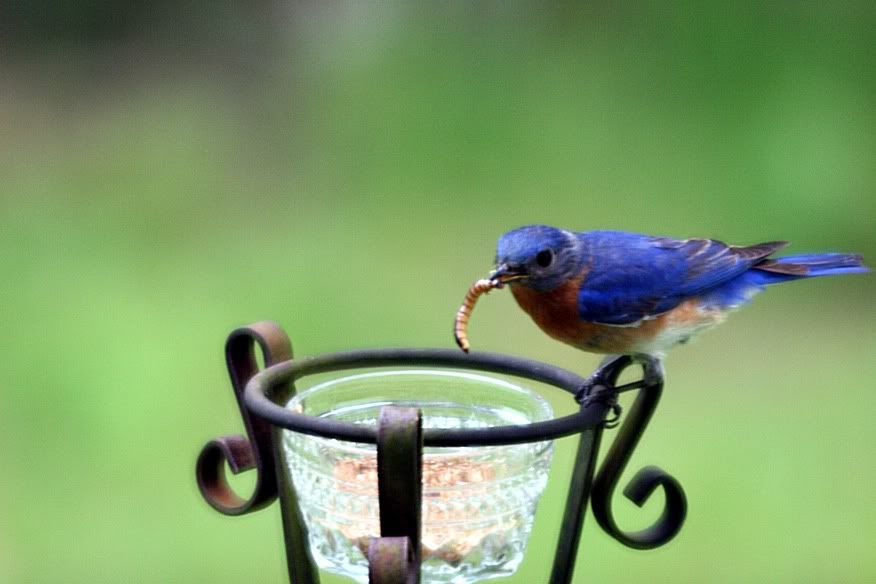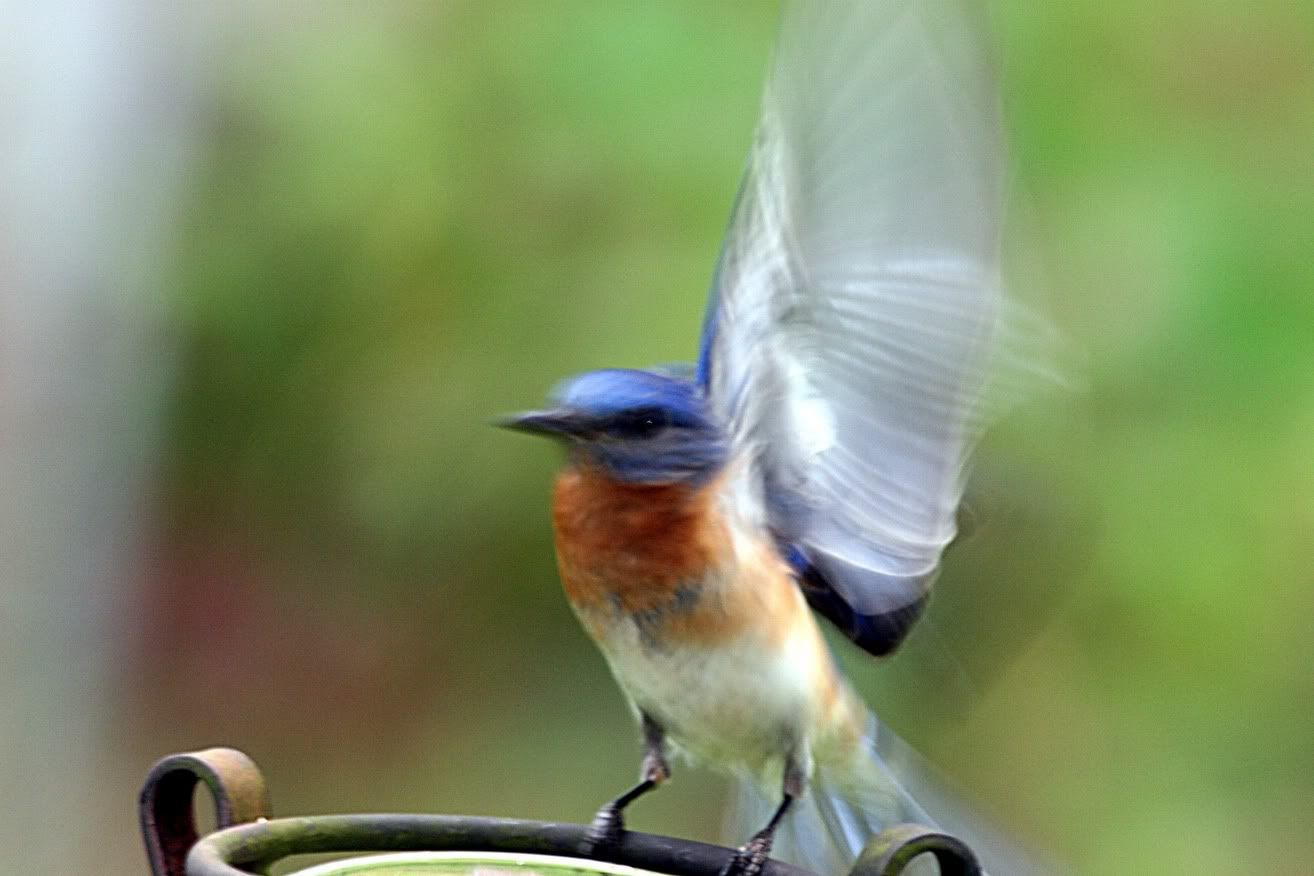
Posted on 03/05/2005 8:07:37 AM PST by sweetliberty
I know what you mean. This isn't the first time I've had barn swallows build their nest in the eaves of my house. It seems the most dangerous times for them is when the babies are first learning to fly, some of them invariably don't quite make it and land on the ground, and I have dogs and a cat. I feel bad when one of my animals catch a baby, but the birds choose that place, I didn't put up a house.
Becky
http://i5.photobucket.com/albums/y161/Lucy35463/bluebirdgroup529019.jpg
[IMG]http://i5.photobucket.com/albums/y161/Lucy35463/bluebirdgroup529019.jpg[/IMG]

Great picture!
[IMG]http://i5.photobucket.com/albums/y161/Lucy35463/Picture022.jpg[/IMG]
[IMG]http://i5.photobucket.com/albums/y161/Lucy35463/Picture022.jpg[/IMG]
HOw did you do that? I'm doing something wrong.
< img src="http://i5.photobucket.com/albums/y161/Lucy35463/Picture022.jpg" >
Hence...

Oh, and to center it, you just put < center > before the image, again, without the spaces.
 Okay, I'll try this.
Okay, I'll try this.
Thanks!

Thanks!
I'm using a Canon 20D I bought a couple of months ago. My first digital. An SLR. I love it. I bought it because I could use my old Canon telephoto lenses with it.
I bought a 2 gig memory chip for it, and depending on how big I set my photos I can take anywhere from about 440 to 2000 pictures without having to change the memory chip. I took it on a vacation trip since I last posted to this thread and ended up with almost 700 pictures, many of them at the largest setting. Another nice feature is that I can set the film speed from ISO 100 to 1600 for each individual picture to adjust for changing light conditions.
I find I take far more pictures with it than my old EOS film camera. This ties in with the secret to taking good pictures, i.e., take a lot of them. Chances are one of them will turn out to be a good shot -- you can discard the rest.
Here's a picture from today taken with a 100-300 mm hand held telephoto lens. The 20D camera increases the magnification (optically I think) by a factor of 60%, so the lens at top magnification is effectively a 480 mm lens. In addition, at highest setting the camera takes roughly a 3500 by 2300 pixel picture. You can crop that and still get good resolution -- this effectively increases your magnification further.
The bird below is a prothonotary warbler. This is not the best shot I took of this bird today, but you get the idea.
One thing I forgot to mention. The Canon digital SLRs (and I assume the Nikon too) differ from some of the less expensive digital cameras in that you view the prospective picture through a view finder rather than on a liquid crystal screen.
I've seen people with ordinary digital cameras holding them out at arms length trying to see what's on the little LC screen so that they know what they are about to take a picture of. That can be a difficult task under certain light conditions. I don't need to do that with my SLR.
I use the LC screen to view the picture I just took. I can blow up the view in that screen to see whether the bird was in reasonable focus and had proper lighting.
I was thinking as I was reading your post, wow that's great having all the Woodpeckers at once. LOL! I'm guarding the feeders too! ;)
Disclaimer: Opinions posted on Free Republic are those of the individual posters and do not necessarily represent the opinion of Free Republic or its management. All materials posted herein are protected by copyright law and the exemption for fair use of copyrighted works.